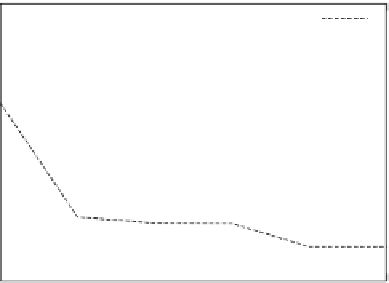Database Reference
In-Depth Information
with work and time speedups ranging from 3 to 1000× for incremental modifications
of up to 25%. The results also point out that CPU-intensive applications can obtain
larger speedups than data-intensive ones, most likely because some data movement
is unavoidable in the incremental run (e.g., to read the new input or to write the new
output). Finally, we note that the speedups decrease with the fraction of changed
data, as expected. However, with very small changes, speedups in work are not trans-
lated into speedups in time, because of the effect of there being less parallelism
available when only a few tasks need to be rerun.
4.6.6 i
nDiviDual
D
esign
F
eatures
Next we evaluate the some of the design features individually, namely the contrac-
tion phase and the new scheduler.
(a)
10
Contraction
Task
1
0
5
10
15
20
25
Incremental changes (%)
(b)
100
Contraction
Task
10
1
0
5
10
15
20
25
Incremental changes (%)
FIGURE 4.6
Performance gains comparison between
Contraction
and
Task
variants.
(a) Co-occurrence matrix. (b) k-NN classifier.









































Search WWH ::

Custom Search